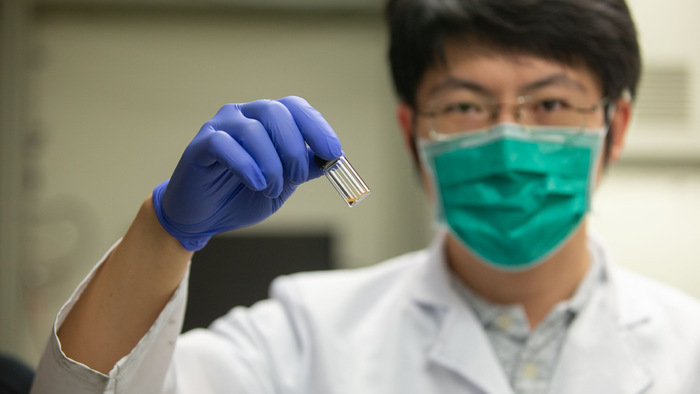New methods for recycling carbon dioxide to produce methane for fuel will make it possible to power return rockets from Mars, and mitigate climate change on Earth, scientists say.
Jingjie Wu and his students at the University of Cincinnati recently published a paper in the journal Nature Communications discussing the Sabatier reaction, named for French chemist Paul Sabatier, which converts gas into fuel.
The method is used on the International Space Station to remove carbon dioxide from the air the astronauts breathe, while generating rocket fuel to keep the station in orbit. The authors of the paper believe this can be done at a much larger scale on the Red Planet, where the atmosphere is mostly composed of carbon dioxide.
“It’s like a gas station on Mars. You could easily pump carbon dioxide through this reactor and produce methane for a rocket,” said Wu.

A chemical engineer, Wu had once studied fuel cells for electric vehicles but later turned to converting carbon dioxide about 10 years ago. “I realized that greenhouse gases were going to be a big issue [for] society,” said Wu. “A lot of countries realized that carbon dioxide is a big issue for the sustainable development of our society. That’s why I think we need to achieve carbon neutrality.”
In April, President Joseph Biden announced his goal of reducing greenhouse-gas emissions by 50 to 52 percent by 2030 as part of a promise to “create millions of good-paying, middle-class union jobs” in an economy that will rely on renewable energy by 2050. “That means we’ll have to recycle carbon dioxide,” said Wu.
Wu and co-author Tianyu Zhang are experimenting with various catalysts, including graphene quantum dots — layers of carbon, nanometers in size — that can increase the yield of methane. Though their process may mitigate climate change, it also holds the promise of commercial success by producing fuel as a byproduct.

“The process is [now] 100 times more productive than it was just 10 years ago. So [as] you can imagine, progress will come faster and faster,” said Wu. “In the next 10 years, we’ll have a lot of startup companies [trying] to commercialize this technique.”
The research team used catalysts to produce not only methane but also ethylene, which is essential in manufacturing rubber, clothing, plastics and other products. “Green energy will be very important. In the future, it will represent a huge market,” said Zhang.
Commercial viability for drawing fuel from carbon dioxide will increase if the process makes use of renewable energy such as solar or wind power, said Wu. “Right now, we have excess green energy that we just throw away. We can store this excess renewable energy in chemicals.”
Producing fuel from carbon dioxide on Mars is another tantalizing possibility that Wu addressed. Currently, a return trip from Mars would require the craft to carry twice as much fuel, making the load heavier. Instead, Wu proposes producing methanol from carbon dioxide and using it to produce other downstream materials. “Then maybe one day we [can] live on Mars.”
Edited by Siân Speakman and Kristen Butler
The post Using Carbon Dioxide To Create A ‘Gas Station’ On Mars appeared first on Zenger News.

